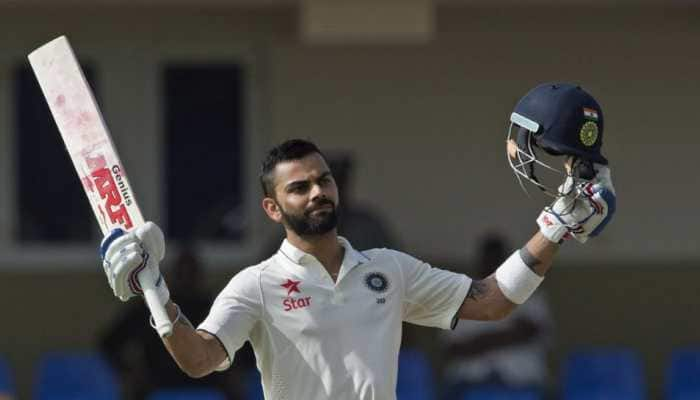Ramayana most popular performing art
In Bangladesh Ramayana is the most popular performing art form.
Trending Photos
)
Dhaka, March 17: In the green hinterland of Islamic Bangladesh, the Ramayana is the most popular performing art form, says a leading playwright of the country.The Indian epic exists in harmony with Sufism and a variety of indigenous folk arts like the Pir Gaan (song of the clergy), Gazi Gaan (song of the priest), Gazir Pail (theatre of the priests), Behular Nach (Dance of Behula) and Paddar Nach (Dance from the banks of river Padma), says Saymon Zakaria.
"At least eight versions of the Ramayana, mostly folklore-based performances, are enacted in the countryside of Bangladesh. It is one of the most popular epics in the country, surpassing even the Mahabharata in its ratings," Zakaria said.
In Agra to attend the SAARC (South Asian Association for Regional Cooperation) Festival of Literature, Zakaria is an Islamic scholar who has written extensively about the Ramayana and the performances associated with it. He is attached to the Bangla Academy in Dhaka.
"Ramayana in villages of Bangladesh is interpreted as a social comment exploring the model relationship between the husband, wife and the members of the family. References to Ramayana can often be found in local folklores that describe filial conduct codes and in domestic conservations," Zakaria said.
Sita`s ‘Agni Pariksha’ (test by fire), for example, was usually interpreted as the tribulations of the average Bangladeshi woman, who was subjected to tests both at her father`s home, in-laws` house and in the conservative Islamic social mosaics of the villages that still frowned upon gender equality and freedom, explained the playwright.
Zakaria describes the different forms of "Ramayana" in Bangladesh in the context of the folk cultures of the districts and history of the country`s performing arts in his book, "Bangladesher Lok Natak (Popular Theatre of Bangladesh)".
One of the oldest and most widely-enacted folk performances of the epic is the "Kushtiya Ramayan Gaan", which originates from Zakaria`s native district, Kushtia, home of the legendary "baul" poet Lalan Fakir.
"It is an oral musical drama sung during Durga Puja and during funerals by the village bards. Kushtiya Gaan speaks of devotion, marital peace and inter-personal ties in the family and society," Zakaria said.
‘Ram Kirtan’ is common to Gopalganj in Kushtia. "It is a secular interpretation of the epic sung and enacted by one narrator known as the ‘dohar’ or the ‘sutradhar’ - who acts as the story-teller," the playwright explained.
The theatrical performance of ‘Ram Mangal’, the rural folk art form of Kishorganj, flourishes throughout the ‘bhakti’ belt of Mymensingh district. "Ram Mangal is an invocation of Lord Rama, an incarnation of Vishnu, performed in the Bhakti (prayer songs) tradition," Zakaria said.
‘Ram Jatra’, typical of Gopalganj, is essentially a variety of ‘uthaan (courtyard)’ theatre, enacted in the courtyards of temples or in the homes of local landlords.
In Lalmonirhaat district of northern Bangladesh and in Chorigram on the West Bengal-Bangladesh border near Malda, Hindu and Muslim minstrels perform "Ram Leela" - a traditional version of the epic sung by Chaitanya Mahaprabhu of Bengal - during funerary feasts and Shivratri.
"These performances last for five to seven days," Zakaria said.
"Kushan Gaan", the story of king Rama`s life, as narrated by his sons Luv and Kush, is enacted in villages of Korigram. "The script, full of music and dance, is a blend of the two versions of the epic written by seers Valmiki and Krittivas," Zakaria explained.
In the tea gardens of Sylhet, Kaliganj and Srimangal, migrant tea "deshwali" workers from Bihar, Chhotanagpur and Orissa enact the Bhojpuri Tulsidas Ramayan for a month during Dussehra.
"Dhop Jatra", another form of courtyard Ramayana, is also performed in the temples of Sylhet.
"In most of these performances, men dress as women and use the local dialect to communicate effectively with the rural audience," Zakaria said, explaining the nature of the plays.
None of these performances has any documented script, says the chronicler. "The performers rely on the oral traditions handed down the generations."
Bangladesh also pays its tribute to Sita, the princess of Mithila and the queen of Ayodhya, through the "Chandravati Ramayan", a 16th century version of the epic scripted by Bengal`s first known poetess, Chandravati.
"Ram takes a back seat in this version of Ramayana and Sita is the leading light. Sita, in Chandravati Ramayan, is Ravana`s daughter who is cast off in childhood after an astrologer predicts that she will destroy her father," Zakaria said.
Chandravari Ramayana is sung by the women of Kishorganj as "geet gaan" during weddings.
IANS
Stay informed on all the latest news, real-time breaking news updates, and follow all the important headlines in india news and world News on Zee News.
Advertisement
Live Tv
Advertisement







)
)
)
)
)
)
)
)
)
)
